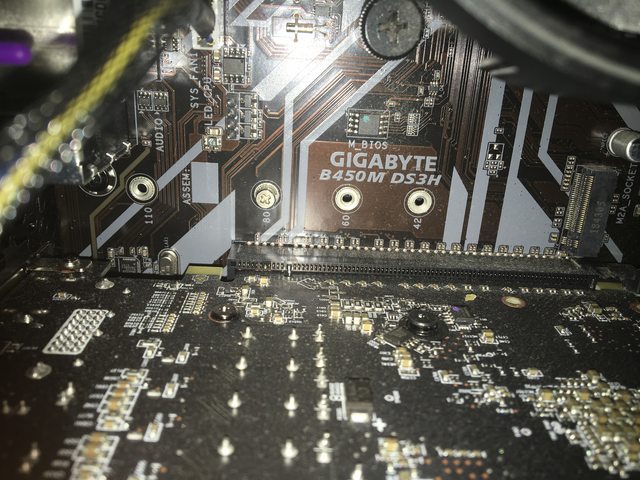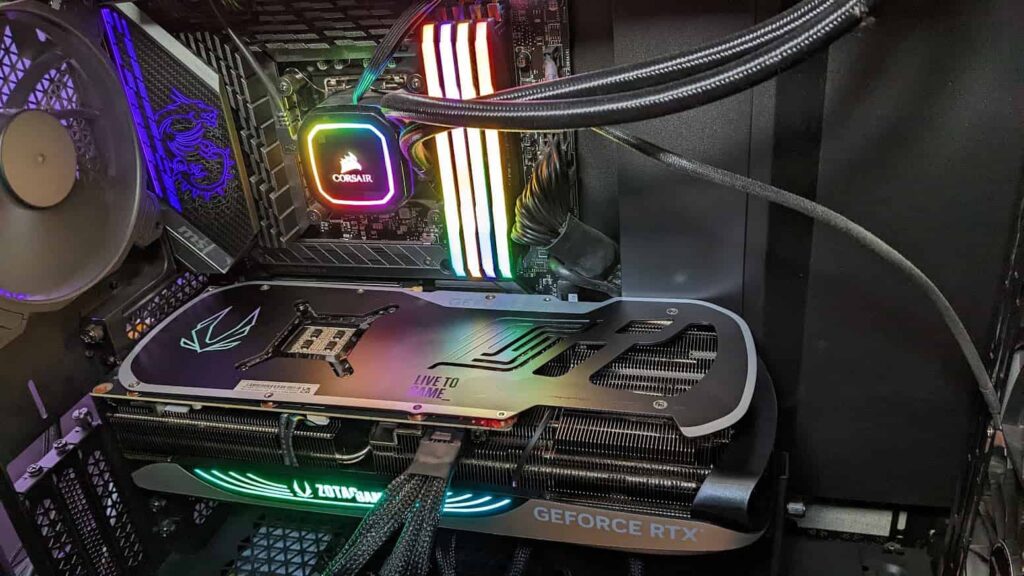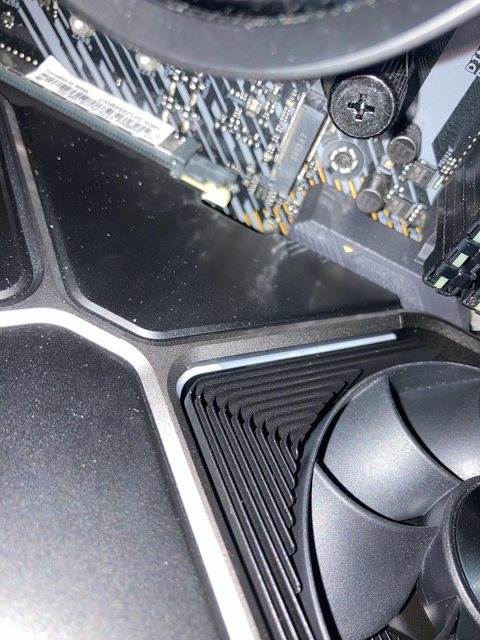How To Tell If Gpu Is Fully Seated – The Reality In 2024!
Have you ever experienced the frustration of installing a new GPU and finding out later that it wasn’t fully seated?
Ensure there is no visible gap between the GPU and the PCIe slot, and check that any retention mechanisms are securely fastened. The GPU could tilt slightly to the side, but it shouldn’t shake or move up and down on the motherboard.
This article will explore the various indicators and techniques to help you determine if your GPU is fully seated in its slot.
Step-By-Step Process On How To Tell If Your GPU Is Fully Seated:

1. Power Off And Safety First:
Prior to inspecting your GPU, ensure that your computer is powered off and disconnected from the electrical outlet.This is crucial for your safety and helps prevent any electrical accidents.
2. Accessing The Interior:
Open your computer case by taking off the side panel. This allows you to reach the internal components, including the GPU and PCIe slot on the motherboard.
3. Visual Inspection:
Examine the GPU’s placement in the PCIe slot. It should be inserted evenly and securely. Verify that the PCIe slot lock mechanism is engaged for added stability.
4. External Power Connections:
Ensure all power connectors are securely attached if your GPU needs external power. Many modern GPUs have PCIe power connectors that must be properly plugged in for optimal performance.
5. Gentle Pressure Test:
Apply gentle pressure to the top of the GPU. You should feel a slight resistance from the PCIe slot. This step helps confirm that the GPU is correctly seated and making a solid connection with the PCIe connector.
6. Wiggle Check:
Try gently wiggling the GPU. An adequately seated GPU should have minimal to no movement. Excessive movement may suggest an insecure connection.
7. Secure Mounting:
If your GPU is secured with mounting screws, make sure they are appropriately tightened. However, be cautious not to over-tighten, as this could cause damage to the GPU or the motherboard.
8. Power On And System Check:
Switch on your computer and observe the startup process. Most systems provide information about detected hardware during the boot sequence. Confirm that the GPU is recognized without any error messages.
9. Device Manager Verification:
In Windows, open the Device Manager and go to the “Display adapters” section. Confirm that your GPU is listed without warning symbols, indicating proper recognition and functioning.
The Crucial Role Of Proper GPU Seating In Your System Setup: Optimizing Performance:

1. Optimal Performance:
- Achieving optimal graphics performance is dependent on properly seating the GPU.
- Ensures stable and reliable connection to the motherboard.
- Allows the graphics card to operate at its full potential, which is critical for gaming, video editing, and 3D rendering tasks.
2. System Stability:
- Loose GPU connections may lead to system instability.
- Intermittent electrical contact can cause crashes, freezes, or unexpected shutdowns.
- Proper seating contributes to overall system stability.
3. Prevention Of Hardware Damage:
- Secure GPU placement prevents potential hardware damage.
- Loose GPUs can stress PCIe slots and connectors, leading to wear over time.
- Minimizes the risk of damage to both the GPU and motherboard, preserving hardware integrity.
4. Avoidance Of Connection Issues:
- A fully seated GPU reduces the likelihood of connection issues.
- Loose connections can cause display artifacts, flickering, or loss of video output.
- Securing the GPU in its slot mitigates potential problems, maintaining a consistent video signal.
5. PCIe Slot Lock Engagement:
- Proper seating ensures engagement of the PCIe slot lock or latch.
- Adds a layer of security, preventing accidental GPU dislodging or movement.
- Contributes to the overall stability of the GPU.
6. Recognition By The System:
- Correctly seated GPU is more likely to be recognized during the boot process.
- Essential for proper initialization and driver loading.
- Allows effective communication between the operating system and GPU, ensuring seamless integration.
7. Long-Term Reliability:
- Maintaining proper GPU seating enhances long-term reliability.
- Reduces the risk of unexpected failures and extends the lifespan of both GPU and motherboard.
- Regularly checking and ensuring proper seating is proactive for preserving hardware reliability.
Troubleshooting Incomplete Seating Of GPU: Seamless Performance:

1. Power Off And Unplug:
- Shut down your computer and disconnect it from the electrical outlet.
- Ensure proper grounding to prevent static electricity discharge.
2. Visual Inspection:
- Thoroughly examine the GPU and the PCIe slot on the motherboard.
- Inspect for any apparent signs of damage or obstruction.
- Verify that the PCIe slot is clear of dust or debris.
3. Reinstall The GPU:
- Gently yet firmly apply pressure to the GPU to ensure it is securely seated in the PCIe slot.
- Ensure the PCIe latch on the motherboard clicks into place, securing the GPU.
4. Check Pcie Power Connectors:
- If your GPU requires external power connectors, ensure they are correctly attached.
- Some GPUs have multiple power connectors, so ensure all are plugged in.
5. Verify Compatibility:
- Confirm that your GPU is compatible with your motherboard and fits correctly into the PCIe slot (e.g., PCIe x16).
6. Try Another Pcie Slot:
- If your motherboard has multiple PCIe slots, attempt installing the GPU in a different slot.
- This can help identify whether the issue is with the slot itself.
7. Inspect The Gpu Bracket:
- Ensure the GPU bracket is correctly aligned with the case and secured with screws.
- A misaligned bracket can stress the PCIe slot.
8. Update Drivers:
- Ensure you have the latest GPU drivers installed.
- Occasionally, driver issues can lead to instability.
9. Bios/UEFI Settings:
- Check your motherboard’s BIOS/UEFI settings to ensure the PCIe slot is enabled.
- Update the motherboard BIOS if a newer version is available.
10. Test With Another System:
- Test the GPU in another compatible system to see if the issue persists.
- This can help determine whether the problem lies with the GPU or the motherboard.
11. Contact Manufacturer Support:
- If the problem persists and the GPU is still under warranty, consider contacting the manufacturer’s support for further assistance.
Conclusion:
In conclusion, ensuring that your GPU is fully seated is crucial in setting up your system. Following the step-by-step process outlined in this article, you can effectively determine whether your GPU is correctly installed. Proper GPU seating plays a significant role in your system’s overall performance and stability, making it essential to troubleshoot any incomplete seating issues. By carefully checking and reseating your GPU, if necessary, you can avoid potential hardware malfunctions and ensure smooth operations for your gaming or professional work.
Frequently Asked Questions:
1. Can I Damage My Gpu If It’s Not Fully Seated?
Yes, improper installation can lead to electrical shorts or physical damage to the GPU.
2. Should I Use Excessive Force When Seating My GPU?
No, using excessive force can cause damage. The card should slide in smoothly with minimal pressure.
3. Are There Any Tools I Need To Ensure My GPU is Fully Seated?
A screwdriver may be required to secure the GPU, but no special tools are needed.
4. How Tight Should The GPU be In The PCIe Slot?
The GPU should be snug and secure. Hand-tighten the mounting screws using a cross pattern, ensuring the GPU is evenly seated.
5. Can A Loose Gpu Cause Damage To The Motherboard?
Yes, a loose GPU can exert physical stress on the PCIe slot and connectors, leading to wear and tear that may result in damage over time.
Read More: